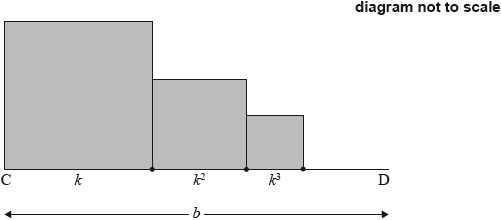| Date | May 2022 | Marks available | 2 | Reference code | 22M.1.SL.TZ1.13 |
| Level | Standard Level | Paper | Paper 1 | Time zone | Time zone 1 |
| Command term | Show that | Question number | 13 | Adapted from | N/A |
Question
A ball is dropped from a height of metres and bounces on the ground. The maximum height reached by the ball, after each bounce, is of the previous maximum height.
Show that the maximum height reached by the ball after it has bounced for the sixth time is , to the nearest .
Find the number of times, after the first bounce, that the maximum height reached is greater than .
Find the total vertical distance travelled by the ball from the point at which it is dropped until the fourth bounce.
Markscheme
use of geometric sequence with M1
EITHER
OR OR A1
AG
OR
OR A1
AG
[2 marks]
EITHER
OR (M1)
Note: If (or ) is used then (M1) only awarded for use of in .
If (or ) is used then (M1) only awarded for use of in .
A1
OR
and (M1)
A1
OR
solving to find (M1)
A1
Note: Evidence of solving may be a graph OR the “solver” function OR use of logs to solve the equation. Working may use .
[2 marks]
EITHER
distance (in one direction) travelled between first and fourth bounce
(A1)
recognizing distances are travelled twice except first distance (M1)
A1
OR
distance (in one direction) travelled between drop and fourth bounce
(A1)
recognizing distances are travelled twice except first distance (M1)
A1
OR
distance (in one direction) travelled between first and fourth bounce
(A1)
recognizing distances are travelled twice except first distance (M1)
A1
Note: Answers may be given in .
[3 marks]
Examiners report
Most of the candidates who tackled this question effectively realized that they were dealing with a geometric sequence and were able to correctly identify the common ratio and identify the sixth term.
Many candidates misunderstood the instruction: ‘Find the number of times, after the first bounce…’ So, the incorrect answers of 16 or 18 were seen frequently.
Few candidates saw that they needed to calculate the distances identified by the seven dotted lines on the given diagram. Those that attempted the question often scored just one mark for using a correctly substituted formula determining the distance travelled in one direction.



